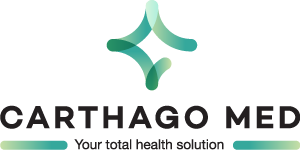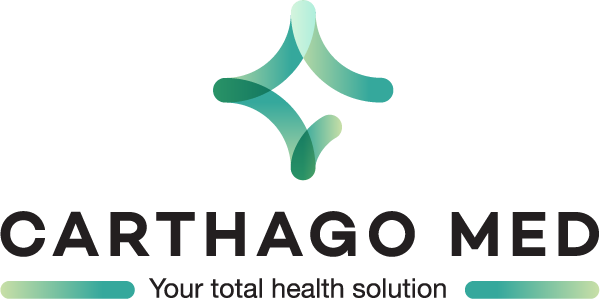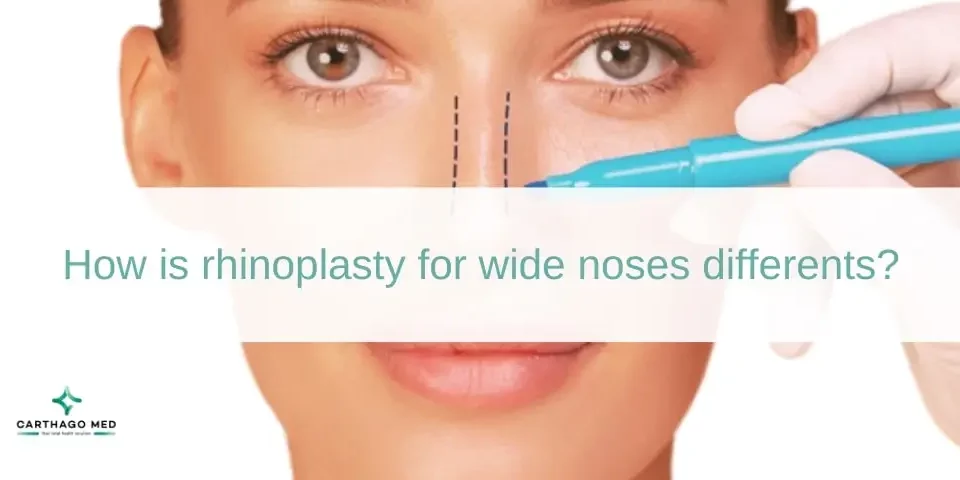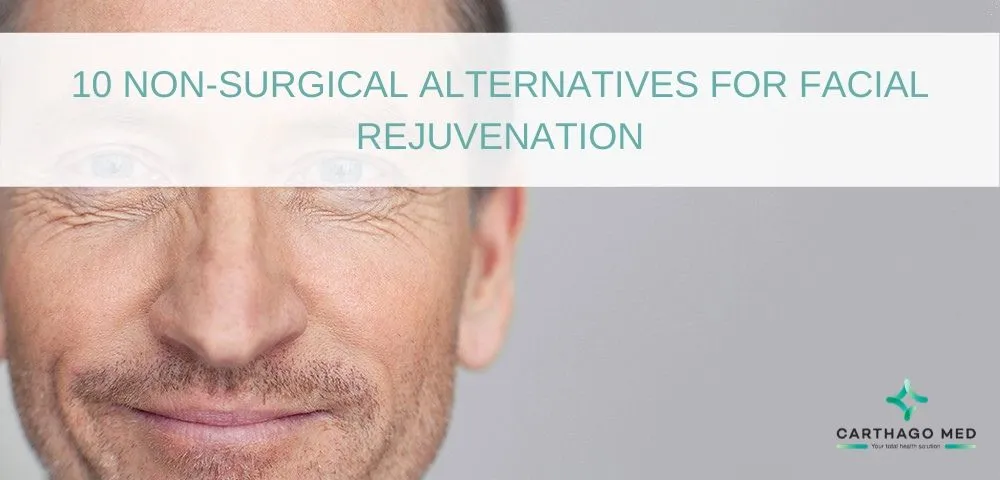
10 non-surgical alternatives for facial rejuvenation
Constant activity of facial muscles on a daily basis causes muscular contraction and relaxation whenever the person makes facial movements or expresses emotions. Facial muscles ensure emotional expression; and the latter is usually achieved at the expense of skin elasticity and hydration each time a micromovement is produced and reproduced over time. That is how the so-called “expression lines” appear. These are found in nasolabial folds, outer eye corners (crow’s feet), the forehead, between the eyebrows (lion’s wrinkles), and on the corners of the mouth (bitterness folds).
Facial rejuvenation treatment encompasses a range of procedures designed to address signs of aging and revitalize the skin's appearance. These treatments target various concerns such as wrinkles, fine lines, sagging skin, and uneven tone or texture. From non-invasive options like microdermabrasion and chemical peels to more advanced techniques such as laser therapy and injectables like Botox and dermal fillers, there's a solution tailored to individual needs and goals. By stimulating collagen production, promoting cell turnover, and enhancing skin elasticity, facial rejuvenation treatments can help individuals achieve a more youthful, radiant complexion. Additionally, advancements in technology and techniques have made these procedures increasingly effective with minimal downtime, making them accessible to a wide range of individuals seeking to restore their skin's youthful vibrancy.
Different techniques have been suggested to rejuvenate the face without having to undergo surgical acts. These are:
1. Botulinum toxin injections (upper face)
The cosmetic form of botulinum toxin blocks the nerve signals to the muscle in which it was injected, and therefore prevents the muscle contraction that is usually responsible for facial wrinkles. The injection could be used to prevent the appearance of wrinkles for patients under the age of 25 (which is less frequent). Nevertheless, if one wishes to prevents signs of skin aging on the long term run, wrinkle treatments do not suffice as the person has to also protect their skin from external factors like sun exposure and tobacco consumption. Recent research has shown that combining botulinum toxin injection therapy to hyaluronic acid injection therapy extend rejuvenating results. Results of this procedure are visible starting from the third day after injections, while optimal results can be appreciated after 15 days. The effect of injections lasts for a period of 6 months or so.
2. Hyaluronic acid injections (lower face)
Hyaluronic acid is a natural substance found in soft connective tissues of the body and in the fluid surrounding eyes. Our bodies produce an approximate amount of 5 g per day; mostly used for the rejuvenation of skin tissues. The more known indications of hyaluronic acid injections are imperfections of the face like wrinkles, fine lines (lion’s wrinkles, crow’s-feet wrinkles, etc.), furrows of the face (nasolabial folds, bitterness folds, chin and lip folds, etc.), the neck, the lips, bitterness folds, and loss of volume that is due to aging (cheeks, under eye, chin, cheekbones, mandibular contour, nose, etc.). It is recommended to renew the filling every 9 to 12 months to maintain the results of hyaluronic acid injections.
3. Mesotherapy or mesolift
Mesolift is an aesthetic treatment that involves injecting a custom-made medical cocktail according to the skin’s needs – based on hyaluronic acid vitamins, minerals, plants, elastin, etc. Mesotherapy, also known as "mesolift" or "biorejuvenation," is a minimally invasive procedure that helps stimulate the body's natural production of collagen - the fibrous protein that helps maintain youthful skin. This process leads to the rebuilding starts immediately, and the effects translate into smoother, firmer skin over time. The technique involves painless microinjections just under the epidermis into the mesoderm, the layer of fat and connective tissue under the skin. It is used to nourish and revitalize the skin; the treatment promotes production of collagen and elastin and also hydrates the skin. This procedure can be done on the face as well as the neck, chest, hands and any other body part showing signs of skin aging. The procedure is relatively painless. Thanks to the injections and the needles used, one would think it might be painful, but it's not.The post-treatment recovery is perhaps the best thing - since there's almost no recovery time necessary. With the patient able to walk in and out of the clinic in a short amount of time, and get back to their daily life without avoiding everyday normal activities. Mesotherapy is a perfect treatment to start with, especially when our skin start to lose the tone and elasticity over time in aging process. Since the treatment does not require recovery time, and the patient can carry on with the daily normal work routine. The continued programmed treatments will finally lead to a regenerated skin, without the presence of aged skin and exhausted signs. Since the skin condition and result may vary from individual to individual.
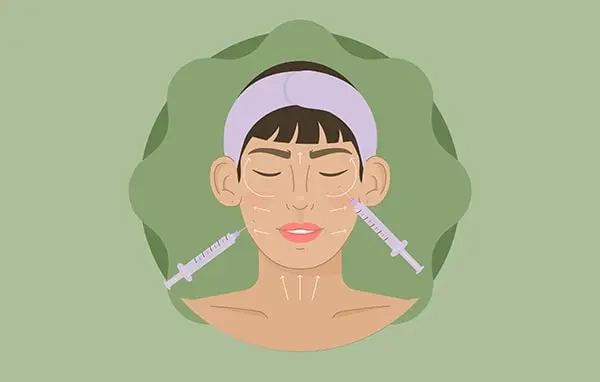
4. Dermabrasion
Dermabrasion is an exfoliating technique that uses a rotating instrument to remove the outer layers of skin, usually on the face. Once the superficial layer of the skin is exfoliated, a new cutaneous layer is naturally formed. This treatment is popular with people who wish to improve the appearance of their skin. Some of the conditions it can treat include fine lines, sun damage, acne scars, and uneven texture. Dermabrasion results in a brightened and homogenous skin. Scars are also removed, pores are refilled and wrinkles are smoothed. This is achievable in one session. It is possible to do a dermabrasion twice per year (except for dermabrasion using co2 laser, which can be done every 3 to 4 years).
5. Chemical peel
Chemical peels are cosmetic treatments that can be applied to the face, hands, and neck. They're used to improve the appearance or feel of the skin. During this procedure, chemical solutions will be applied to the area being treated, which causes the skin to exfoliate and eventually peel off. Once this happens, the new skin underneath is often smoother, less wrinkled, and more even in terms of its color. Over time, the new skin will look and feel much healthier. It may take several days for the skin to start peeling, and it may continue to peel for some time. Depending on the level of the treatment, this could determine the recovery, but from less severe to more severe, it usually takes between 15-30 days to fully recover. Different chemicals will cause different levels of penetration, and ultimately the deeper they work, the more severe a reaction there might be. Superficial peels are the gentlest type of peel and will only penetrate the outer layer of the skin, which makes them the ideal option for those with pigmentation, acne, and early signs of aging. As a matter of fact, they can even help to unblock pores and make the skin look and feel smoother. Medium peels however penetrate the outer and middle layers of the skin and can be used to treat not only the previously mentioned problems, but also to address skin discoloration - primarily deep set lines and sun damaged skin. Deep peels will penetrate to the lower dermal layer of the skin and are often used to remove deep set lines, tightness of the skin and advanced sun and age-related skin problems. When undergoing a medium or deep peel, it is not uncommon to experience a mild, sunburn sensation - most prominently within the first few minutes after the procedure has been completed. However, your clinician will factor this into the overall treatment by advising and providing mild pain relief or adjusting the skin with cold compresses if necessary. For medium and deep peels, pain relief and local anesthetics is usually provided, therefore this only results in a slight stinging or prickling feeling. But with the milder options, you might not need any anesthetic at all. Please remember that sun protection doesn’t end with laser treatment, but after any form of facial rejuvenation therapy, to prevent infection and aid the healing process. So remember to always protect your skin using a broad-spectrum sun block with SPF 50+ and avoid going out in direct sunlight in the first 6 weeks.
6. PRP
Platelet-rich plasma (prp) includes drawing a patient’s own blood, separating the platelets, and then injecting them into the skin via microneedling. This technique is believed to offer immediate results of rejuvenated and glowier-looking skin. The platelets can be shot into the eye corners, mouth corners, scars, and stretch marks. After one month, the patient will feel that their skin is smoother, less wrinkly, and free of imperfections.
7. Thread lifts
Thread lifts present an incredible alternative to surgical face-lifts, and offer a remedy for skin aging. It is a procedure wherein temporary sutures are used to produce a subtle but visible lift in the skin. The cosmetic surgeon suspends the patient’s loose skin by stitching up portions of it. This has the effect of pulling the skin back slightly and therefore lifting and tightening it. Areas that can be treated using the thread lift technique are the cheekbones, nose and chin fissures, jowls, corners of the mouth, the oval of the face, and eyebrows and the area in between them. The results are immediately visible after the first session. The skin feels more lifted 15 to 30 days after the lift, which will be further improved in the months that follow the intervention.
8. Laser treatment
Laser skin resurfacing is a popular skin rejuvenation treatment for patients who want to rejuvenate and refreshen the look of their skin. Many people with facial aging signs like wrinkles, sun spots, acne scars, and other types of skin blemishes consider laser treatment. The potential of erasing the wrinkles and turning back the clock by several years really excites many people. Laser treatment helps our skin solve its aging problem from its root. There are many different laser technologies which can be used for skin resurfacing, which includes CO2 Laser, Erbium YAG Laser, and Fraxel Laser. All these lasers emit a powerful beam of light which can remove the damaged outer layer of the skin. Each laser technology has its own unique features and indications for use. People who have a busy lifestyle especially like laser treatment, since like Botox or facial creams, the treatment time is minimal and can be fitted around a hectic working schedule. Also, the downtime is immediate and there is minimal disruption from side effects. Well-planned laser skin resurfacing has the potential to deliver amazingly positive effect to our skin rejuvenation and anti-aging long-term goal. Among many different parameters and settings for laser rejuvenation therapy, the most important concept here is to reduce the frequency of the skin surface change, to increase the natural environmentally protective functions of the skin. This may sound odd as the laser treatment would potentially damage the skin surface. However, as the skin starts to heal from the laser damage, it would induce generation of a new healthier younger skin with increased regular collagen and elastin substances in the deep skin layer. By doing so, the frequency of skin surface change due to the environment and aging will be vastly reduced and hence the anti-aging effect takes place. It describes in brief why and how the laser treatment enhances intrinsic skin rejuvenating factors to achieve long-term beneficial effect. Modern lasers have given doctors a great deal of flexibility, enabling them to treat a broad range of skin conditions: from the superficial tightening and the treatment of small wrinkles through to the deeper wrinkle problems, usually in areas with thick skin like the forehead. Thanks to its selective character, laser light can be accurately controlled in both amount and placement on the skin, ensuring a gentle and discrete treatment. Each pulse of the laser will penetrate to very precise in the skin treated to remove a skin layer.
9. Photo-rejuvenation
Photorejuvenation is a rejuvenating technique that uses intense pulsed light (ipl). It treats skin conditions like dark and red spots and gives the face, neck and cleavage area a younger appearance. Ipl can be combined to other interventions of the face like chemical peeling or micro-abrasion to treat skin slackening.
The intervention has a tightening effect on the skin, but severe wrinkles and lines cannot be treated through a simple photo-rejuvenation technique. Results can be appreciated after several weeks with skin quality improvement. The latter can be maintained by taking good care of the skin and avoiding harming factors like sun exposure and tobacco consumption. It is recommended to redo the intervention every 6 to 18 months in order to maintain the results.
10. Carboxytherapy
Carboxytherapy involves the injection of carbon dioxide gas (co2) beneath the skin to stimulate collagen production and increase oxygen supply, as well as blood flow. The intervention treats wrinkles and skin laxity, most effectively around the eye with regards to crepey skin and saggy eyelids. It also corrects crow’s feet, nasolabial folds, bitterness folds, and wrinkles around the neck. Carboxytherapy improves skin elasticity and quality and removes small pockets of fat. There are no contraindications to the treatment except for pregnancy.
All the aforementioned rejuvenating treatments can be performed on their own or combined to other techniques depending on the patient’s medical case and desired outcome. In certain cases of severe skin aging, cosmetic medicine will not suffice, and surgical acts like facelift or cervico-facial lift will be needed; and therefore suggested by the surgeon. It is however important to consult your surgeon when choosing your non-surgical or surgical rejuvenating act to make sure that it is well-adapted for you.







